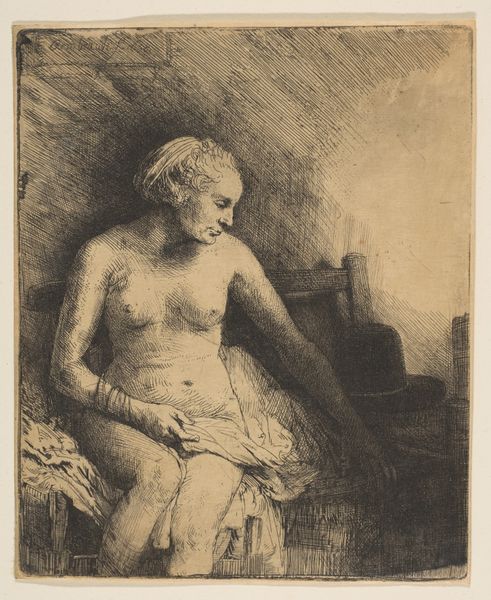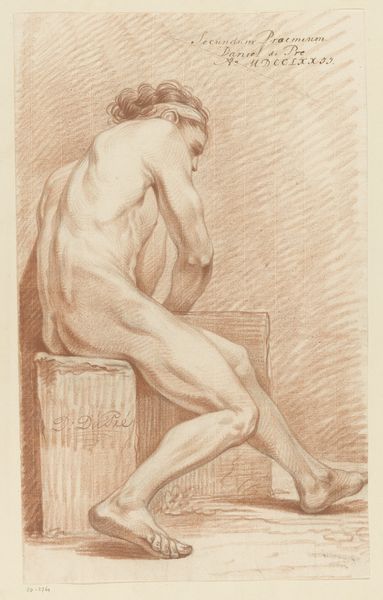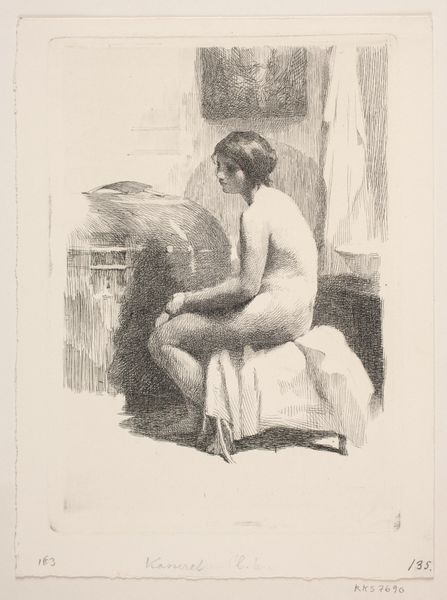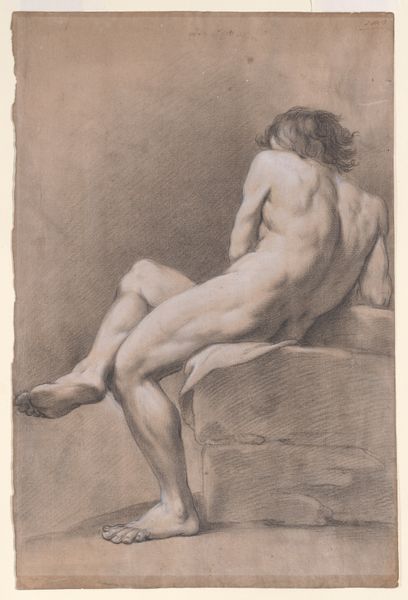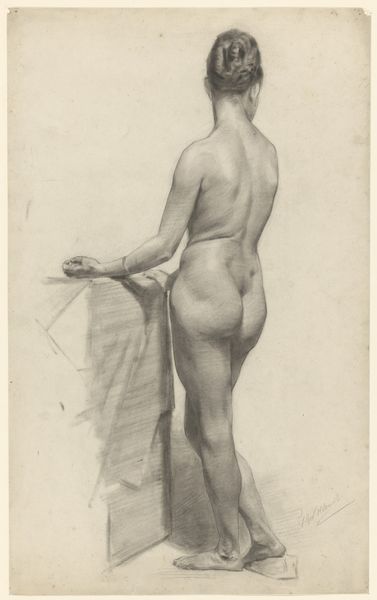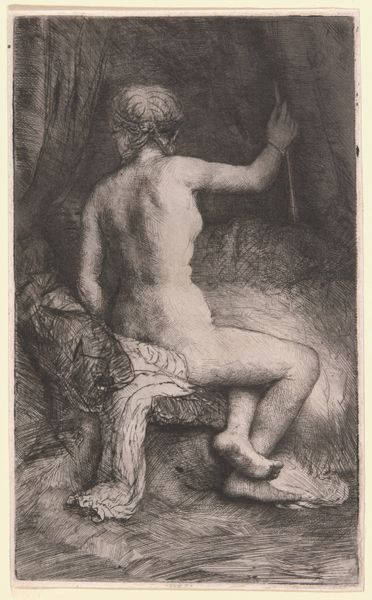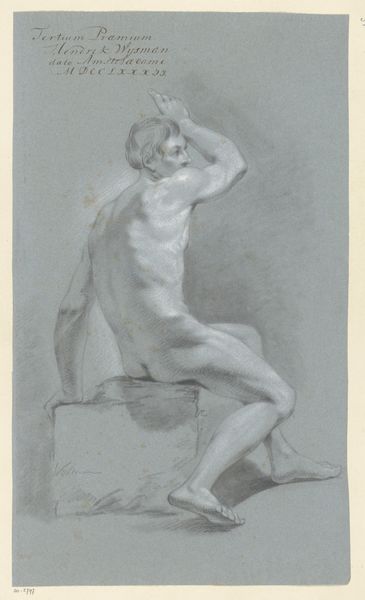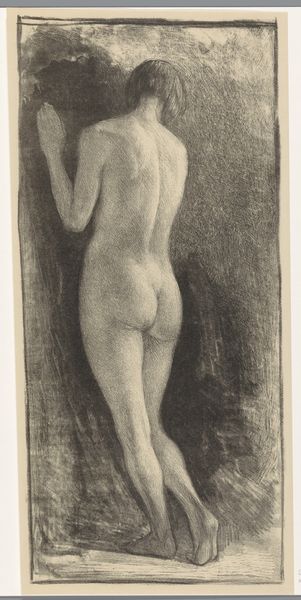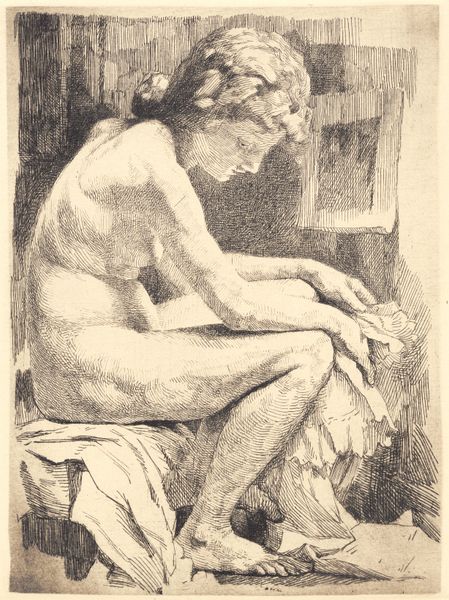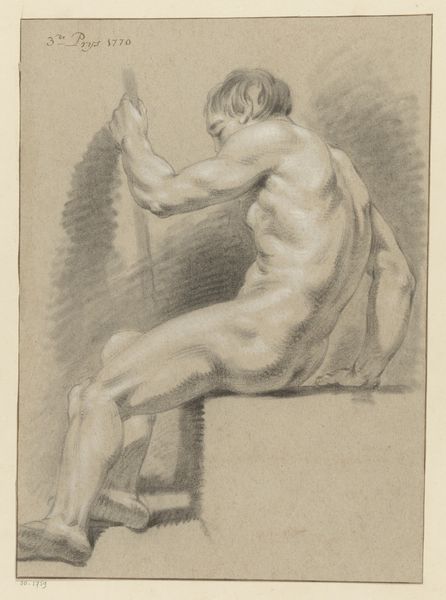
drawing, paper, pencil
#
portrait
#
pencil drawn
#
drawing
#
pencil sketch
#
charcoal drawing
#
figuration
#
paper
#
pencil drawing
#
pencil
#
portrait drawing
#
academic-art
#
nude
#
realism
Dimensions: height 417 mm, width 288 mm
Copyright: Rijks Museum: Open Domain
Pieter Pietersz. Barbiers created this drawing of a seated male nude, seen from the back, using graphite. The image embodies a practice deeply embedded in the institutional history of art education. In the late 18th century, academies across Europe emphasized life drawing as the bedrock of artistic training, a tradition extending back to the Renaissance. This wasn't merely about anatomical accuracy. By rendering the nude, artists engaged with classical ideals of beauty and proportion, reinforcing a canon rooted in antiquity. Made in the Netherlands, the drawing reflects a culture grappling with its artistic identity in relation to these established norms. Was it a self-conscious embrace of academic tradition? Or did it question the power structures embedded in the art world? Further research into Barbiers' career and the Dutch art scene of his time could shed light on these questions, revealing the complex interplay between artistic practice and social context.
Comments
No comments
Be the first to comment and join the conversation on the ultimate creative platform.
